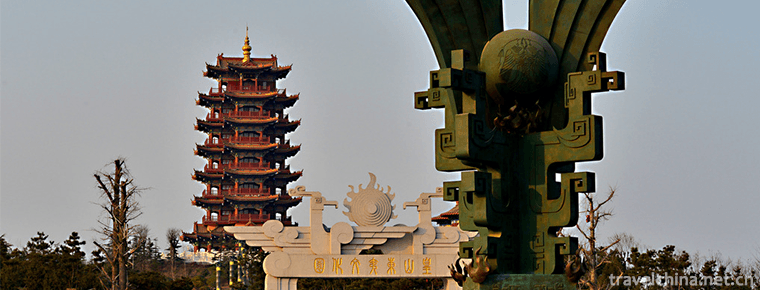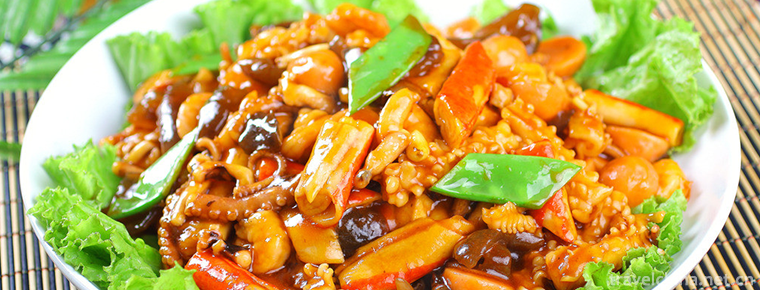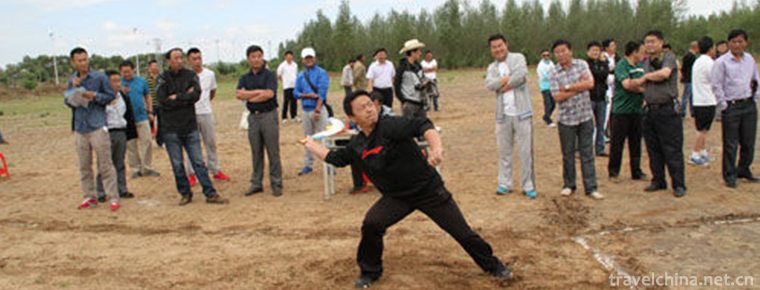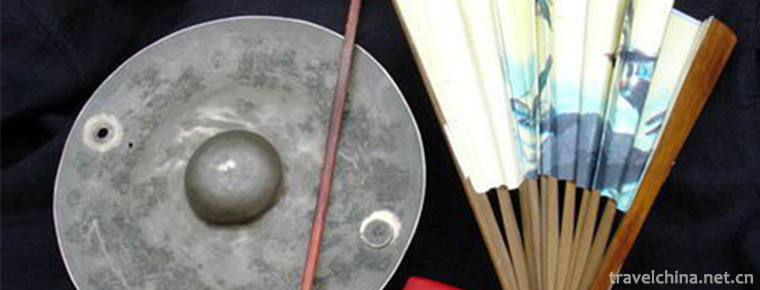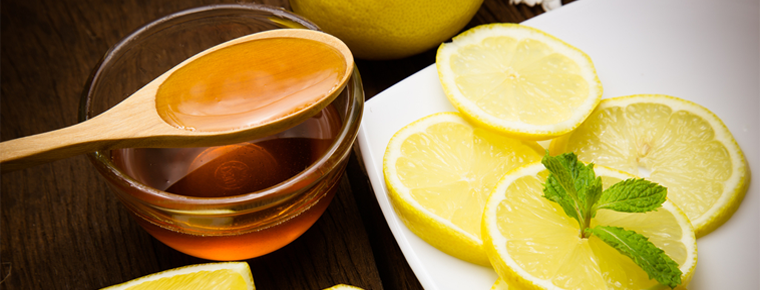Imitated Diet Making Skills of Imperial Diet in Qing Dynasty
Imitated Diet Making Skills of Imperial Diet in Qing Dynasty
Imitated meals (imperial meals of the Qing Dynasty) production skills, Beijing Xicheng District local folk traditional skills, one of the national intangible cultural heritage.
Imitated meals (imperial meals of the Qing Dynasty) are made from precious raw materials such as Shan Bazhen, Hai Bazhen, Poultry Bazhen, Cao Bazhen, etc., using Manchu barbecue and Han stewing techniques, bringing together the essence of North-South flavor and a wide range of dishes.
On May 23, 2011, the imitation diet (imperial meal of the Qing Dynasty) production technology was approved by the State Council of the People's Republic of China and included in the third batch of national intangible cultural heritage list of traditional skills, item number_-204.
historical origin
In 1925, Beijing Imitated Meal Restaurant was founded by several royal chefs in the former imperial dining room of the Qing Palace. The restaurant is named "imitation meal", which means to specially imitate the method of imperial dining room to make dishes.
In 1979, after digging and sorting out, Fangshan Restaurant launched the first representative banquet of the Imperial Diet of the Qing Dynasty in China, which attracted wide attention from the catering circles all over the world. After tasting it, Mr. Pujie, the brother of the last emperor, wrote down the comment of "authentic Manchu-Han Full Seat".
In 2005, with the support and assistance of Quanjude Group, the Fangshan Restaurant has made a new breakthrough in non-legacy work. In that year, Fanzhuang set up the Manchu-Han Full-Chair Research Committee and hired a number of experts to guide the work. The restaurant carries out R&D and innovation on the "Man-Han Full Seat" dishes. While inheriting the original flavor, according to the characteristics of modern people's green healthy diet, the restaurant chooses food materials and cooks them carefully. It launches the "Man-Han Full Seat Selected Menu" for customers, so that guests can enjoy the delicate features of the Royal meal of the Qing Dynasty when eating a meal.
Process characteristics
Man Han Quan
As the representative of the imperial meal of the Qing Dynasty, the imitation meal of Manchu and Han Dynasty inherited the Imperial Diet Culture completely. From the layout of the environment to the dining environment, from dishes to cooking methods, all of them strived for the original flavor of the Royal banquet. Its greatest feature is "refined, complex, rich and precious", that is, the selection of meals is fine, the cooking process is complex, the variety is rich and diverse, and the precious and rare raw materials. Selecting precious raw materials such as Shan Bazhen, Hai Bazhen, Poultry Bazhen, Cao Bazhen and so on, using Manchu barbecue and Han stew and boiling techniques, the essence of North-South flavor is gathered. There are many dishes, and the whole set of Manchu-Han dishes has more than 100 dishes, which can be eaten in three days and six meals.
Pine Hericium
Imitated meals (imperial meals of the Qing Dynasty) production skills, Beijing Xicheng District local folk traditional skills, one of the national intangible cultural heritage.
Imitated meals (imperial meals of the Qing Dynasty) are made from precious raw materials such as Shan Bazhen, Hai Bazhen, Poultry Bazhen, Cao Bazhen, etc., using Manchu barbecue and Han stewing techniques, bringing together the essence of North-South flavor and a wide range of dishes.
On May 23, 2011, the imitation diet (imperial meal of the Qing Dynasty) production technology was approved by the State Council of the People's Republic of China and included in the third batch of national intangible cultural heritage list of traditional skills, item number_-204.
historical origin
In 1925, Beijing Imitated Meal Restaurant was founded by several royal chefs in the former imperial dining room of the Qing Palace. The restaurant is named "imitation meal", which means to specially imitate the method of imperial dining room to make dishes.
In 1979, after digging and sorting out, Fangshan Restaurant launched the first representative banquet of the Imperial Diet of the Qing Dynasty in China, which attracted wide attention from the catering circles all over the world. After tasting it, Mr. Pujie, the brother of the last emperor, wrote down the comment of "authentic Manchu-Han Full Seat".
In 2005, with the support and assistance of Quanjude Group, the Fangshan Restaurant has made a new breakthrough in non-legacy work. In that year, Fanzhuang set up the Manchu-Han Full-Chair Research Committee and hired a number of experts to guide the work. The restaurant carries out R&D and innovation on the "Man-Han Full Seat" dishes. While inheriting the original flavor, according to the characteristics of modern people's green healthy diet, the restaurant chooses food materials and cooks them carefully. It launches the "Man-Han Full Seat Selected Menu" for customers, so that guests can enjoy the delicate features of the Royal meal of the Qing Dynasty when eating a meal.
Process characteristics
Man Han Quan
As the representative of the imperial meal of the Qing Dynasty, the imitation meal of Manchu and Han Dynasty inherited the Imperial Diet Culture completely. From the layout of the environment to the dining environment, from dishes to cooking methods, all of them strived for the original flavor of the Royal banquet. Its greatest feature is "refined, complex, rich and precious", that is, the selection of meals is fine, the cooking process is complex, the variety is rich and diverse, and the precious and rare raw materials. Selecting precious raw materials such as Shan Bazhen, Hai Bazhen, Poultry Bazhen, Cao Bazhen and so on, using Manchu barbecue and Han stew and boiling techniques, the essence of North-South flavor is gathered. There are many dishes, and the whole set of Manchu-Han dishes has more than 100 dishes, which can be eaten in three days and six meals.
Pine Hericium
Mandarin duck peach shrimp
Mandarin duck peach shrimp is not only delicious, but also a fine carved crafts. Choose prawns from the sea, mix egg white and oil, make a hundred sets of shrimp mashed, then knead the shrimp mashed into mandarin duck shape, then add carrot shredded, colored pepper shredded, cucumber shredded, black sesame, into a vivid and colorful Mandarin duck.
Chang'e knows
1. Cut shrimps and pork into fine hairs and put them in a small pot.
2. Add yellow wine, salt, monosodium glutamate, ginger, onion, egg white, starch and water chestnut into shrimp and pork antler and stir them into a thick paste.
3. Use a large flat dish, put a layer of oil on it, and squeeze shrimp antler into twenty-four balls for reserve.
4. Cut pork into 5*cm long and 2 cm thick strips, mix with egg white and a little starch paste.
5. Remove the leaves, tear off the skin and cut 4.5 centimeters long.
6. Cut thin and cooked ham and mushrooms into thin strips.
7. Place the bottom oil in the spoon and fry the shrimp balls flat with a small spoon over a small fire. When frying, heat the oil continuously. Use the method of half-frying and half-frying, keep the oil temperature at 34% heat and fry the shrimp balls light yellow.
8. Pour oil into the spoon, heat the oil into the pork strips, then pour celery heart, ham and mushrooms into the spoon, stir-fry with the pork strips, and pour out.
9. Leave less room oil in the spoon, fry Huisi slightly after heating, then pour the fried ingredients into the spoon, cook with vinegar first, then add salt, flavor and a little soup, stir-fry.
10. Stir-fry with water, add chicken oil, spoon in the center of the dish, and then put the fried shrimp cake in four weeks.
Inheritance and protection
Inheritance value
A waitress dressed in Manchu costume greets the guests with lanterns. Guests can also wear dragon robes, which addicts the emperor and adds a sense of immersion to the guests. After the guests are seated, they should clean their face and hands with small towels. The musicians will accompany the banquet with ancient music and follow the elegant legacy with strict and solemn etiquette, which will make the guests forget to return. Make it appreciate the profound Chinese cuisine and the origin of food culture. During the banquet, the waiter euphemistically talked about the exquisite allusions of famous dishes and the legendary origins of the tablets on pavilions and galleries, which made the guests more interesting.
Inheritance status
Nowadays, the imitation meal restaurant in Beijing has innovated and developed on the basis of the original palace dish production. As a member of the modern catering market, it has already been in line with the modern standards in the aspects of cooking methods, quality and food safety.
Inheriting characters
Dong Shiguo, male, Han nationality, born in 1936 in Hebei Province. Guobao Class Cooking Master, the third generation inheritance of imperial cuisine of Imitated Food Restaurant.
protective measures
Up to 2019, Imitated Food Restaurant has passed the certification of ISO 9001 Quality Management System and ISO 22000 Food Safety Management System successively. The research and development innovation of Qing Dynasty Royal Food Technology has already been incorporated into the quality/food safety management system, and has to be strictly monitored and evaluated every year.
social influence
Honorary recognition
On March 27, 2009, the award ceremony for the selection of 60 benchmarking restaurants in Beijing catering industry and the Beijing catering summit of Beijing catering industry network sponsored by Beijing catering industry association and catering network were held in Beijing. Quanjude, imitation meals and Fengze Garden have won the honor of "30 most influential benchmarking restaurants in Beijing catering industry in the past 30 years of reform and opening up" by netizens'vote and experts' evaluation.
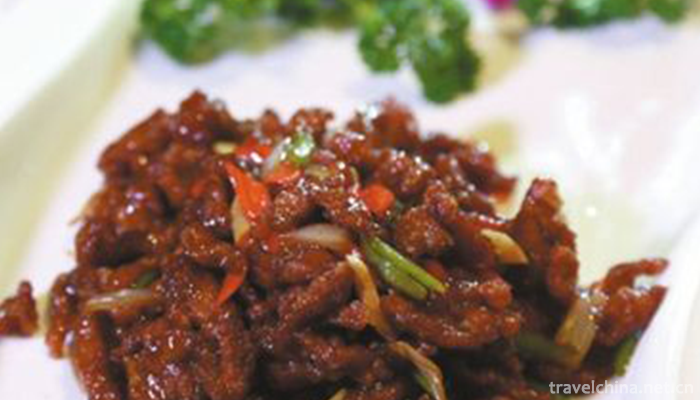
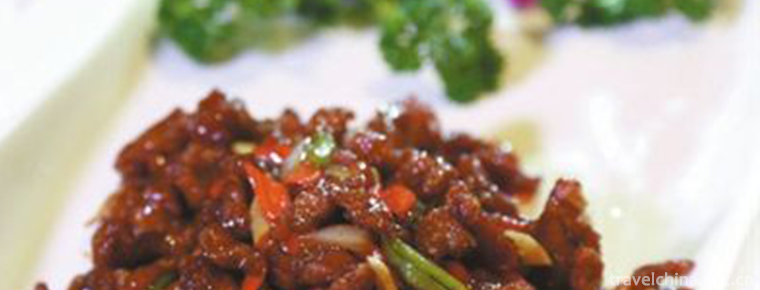
Imitated Diet Making Skills of Imperial Diet in Qing Dynasty
-
Zepkin Lake Yang National Forest Park
Zepujin Lake Poplar National Forest Park is located 36 kilometers southwest of Zepu County in Yasidun Forest Farm. It is located on the upper edge of the Yerqiang River alluvial fan
Views: 179 Time 2018-12-12 -
Huguangyan Scenic Spot
Huguangyan Scenic Spot is located 18 kilometers southwest of Zhanjiang City, the southernmost part of the mainland of China. It is called "natural yearbook" of earth and geological science b
Views: 198 Time 2019-01-16 -
Huangshan Yi Culture Tourist Area
Huangshan Yi Cultural Park is a national AAAA-level tourist attraction, located in the northwest of Linyi Economic and Technological Development Zone.
Views: 280 Time 2019-01-18 -
Jiangbulak Scenic Area
Jiangbulak Scenic Area is located in the low mountain belt 58 kilometers southeast of Qitai County, Xinjiang, China. It includes wide gully scenic area and Yangwatan beach
Views: 164 Time 2019-01-21 -
Bazhen Tofu Box
Firstly, the tofu was cut into pieces and fried into crisp skin tofu. Then, eight kinds of raw materials were cooked together with the fried tofu in one pot. There are different opinions about "B
Views: 240 Time 2019-03-27 -
Bru
Bru, Mongolian means throwing. Competitions are divided into two categories: long throw and accurate throw, mostly held in festive festivals. The long throw is to decide
Views: 477 Time 2019-04-04 -
Liu Sanjies Ballads
Liu Sanjie's folk songs, a local traditional folk literature in Yizhou City, Guangxi Zhuang Autonomous Region, are one of the national intangible cultural heritages.
Views: 424 Time 2019-05-13 -
Pinghu cymbal book
Cymbals are a unique form of local traditional folk art in the Wu dialect area of Jiangnan. According to the Records of Songjiang County, it was formed in the Qing Dynasty (1821-1850). It is now mainl
Views: 154 Time 2019-06-09 -
Pingnanping Opera
Pingnanping opera is a kind of traditional opera with a history of 400 years. As the predecessor of Fujian opera, the main features of the opera are that Taobai singing uses Fuzhou Mandarin, the front
Views: 366 Time 2019-06-09 -
Lemon Honey Tea
Honey lemon tea is made of honey and lemon. It has many functions such as whitening, nourishing, lowering blood fat, clearing heat, detoxifying, moistening and drying. Lemon contains vitamin B1, vitam
Views: 378 Time 2020-03-16 -
Wuliangye distillery
Wuliangye Group Co., Ltd. is located at the intersection of Jinsha River and Minjiang River, the first city of the Yangtze River -- "Jiudu" Yibin. It is a modern corporate group with Wuliangye series liquor production as its main business
Views: 340 Time 2020-10-16 -
Population of Guangan
At the end of 2019, the total registered residence of Guang'an was 4 million 593 thousand. Among them, the rural population was 3.424 million, the urban population was 1.169 million, the birth population was 47900, and the death population was 5310
Views: 254 Time 2020-12-19


